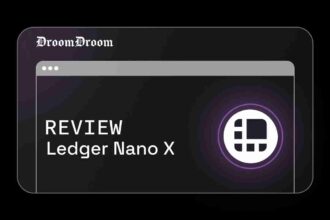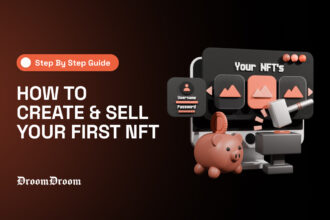The intent behind the development of ERC-3643 is the elimination or breaking down of existing traditional barriers such as boundaries, which exist between the real world and the blockchain platform. The asset digitization standard is established on the Ethereum blockchain and improves asset tokenization efficiency while guaranteeing compliance, security, and transparency in a peer-to-peer world.
- What Is ERC-3643?
- How Does ERC-3643 Work?
- Key Features of ERC-3643 Tokens
- Asset Representation
- Interoperability
- Programmable Agreements
- Regulatory Compliance
- Fractional Ownership
- Immutable Ownership Records
- Upgradeability
- Uses of ERC-3643
- Real Estate Tokenization
- Art and Collectibles
- Commodities Tokenization
- Private Equity and Venture Capital
- Tokenized Securities
- Intellectual Property Tokenization
- Tokenized Real Assets in Games
- Supply Chain Finance
- Key Considerations to Look for When Hiring Top Blockchain Developers for ERC3643 Projects?
- Erc-3643 vs Erc-20: What’s the Difference?
- Advantages and Disadvantages of Erc-3643
- Advantages of ERC-3643
- Asset Tokenization
- Interoperability
- Regulatory Compliance
- Increased Accessibility
- Transparency and Immutability
- Upgradeability
- Disadvantages of ERC-3643
- Conclusion
ERC-3643 is a state-of-the-art token standard in the Ethereum blockchain that addresses the tokenization of RWAs. ERC-3643 is revolutionary because it changes how people think about tangible assets, trade real estate tokens, or transfer value like money.
What Is ERC-3643?
ERC-3643 is a state-of-the-art token standard in the Ethereum blockchain that addresses the tokenization of RWAs. While it is more sophisticated than the generic token standards, ERC-3643 facilitates the representation of physical products including property and art. The importance of this process is facilitating easy tokenization, meeting the regulatory requirements of different systems, and upholding the transparent nature of these decentralized ecosystems. As such, ERC-3643 is one step ahead in terms of innovation as it is a model capable of handling legal complications related to property ownership while presenting the owner’s rights on the public blockchain.
Interested in mastering Ethereum DApp development here is a guide for you.
How Does ERC-3643 Work?
ERC-3643 is an all-inclusive token standard for incorporating RWAs in the Ethereum blockchain. Fundamentally, ERC3643 includes the regulations and procedures that govern the minting, administration, and exchange of these types of tokens. The process of tokenization of various assets such as real estate, and precious art among others leads to key features that enable its operations. Therefore, through an ERC-20 token, they allow for programmable agreements over assets such as real estate and other fixed assets as governed by ERC-3643, which takes advantage of ether smart contracts functionality. The smart contracts incorporate all vital information relating to underlying assets like owners’ info, lawful conditions, and compliance guidelines.
In addition, ERC-3643 includes functionalities that facilitate compatibility with current DeFi platforms, enabling smooth interaction with the wider blockchain environment. Liquidity also expands across such a tokenization platform through the use of its assets and their subsequent trade ability, borrowing, and employment as collateral in distributed finance solutions. Essentially, ERC-3643 places a premium on regulatory compliance by including mechanisms for compliance with laws that govern asset tokenization. Assets should be tokenized in such a way as to take into account local requirements; moreover, the system must include mechanisms allowing for both security and visibility for general acceptance.
Key Features of ERC-3643 Tokens
ERC-3643 tokens, designed specifically for real-world assets (RWAs) on the Ethereum blockchain, come with several key features that distinguish them in the realm of asset tokenization:
Asset Representation
ERC-3643 are tokens that represent assets like real estate, art, and commodities. These are some of the very important data that the asset’s ownership details, legal conditions, and compliances.
Interoperability
An important characteristic of the token is that it can be integrated with popular Defi protocols. Interoperability implies that such tokens are efficiently incorporated in multiple DeFi apps, thus adding to the value provided by the bigger blockchain environment.
Programmable Agreements
ERC-3643 tokens exploit Ethereum’s smart contracts with programmable agreements. Smart contracts enable self-executable and configurable protocols related to the transferring of, distributions, and governance concerning the tokenized assets.
Regulatory Compliance
Regulatory compliance is incorporated into ERC-3643 addressing a fundamental issue arising from the tokenization of real-world assets. This standard creates channels that allow them to comply with jurisdictional rules. Also, they give clear guidelines concerning asset tokenization without breaching any laws.
Fractional Ownership
The contract helps support fractional ownership, making it possible for people to split a physical asset into tradable pieces. This characteristic allows more investors to purchase and trade costly goods daily thereby improving liquidity.
Immutable Ownership Records
ERC-3643 token ownership is saved in the blockchain making it immutable and transparent. Such a tamper-resistant ledger shows a verifiable and immutable chain of custody of the tokenized assets thus making them more secure.
Upgradeability
The design of ERc-3643 is updateable hence there will be no need for migration to another contract. It makes the system flexible enough to change along with the dynamic environments of technology and policy.
Uses of ERC-3643
Real Estate Tokenization
ERC-3643 enables the tokenization of fractions of real estate property. This enables the property owners to tokenize their assets allowing investors to have the chance of buying into premium properties without having a massive amount of money to do so.
Art and Collectibles
The tokenization of art and collectibles through ERC-3643 leads to fractional ownership and subsequent trading of unique and essential pieces. This use case helps ensure that the art market has increased levels of liquidity so that it becomes possible for various people to own famous artworks by investing.
Commodities Tokenization
By applying an ERC-3643 standard, physical goods such as gold and other similar commodities or farm produce can also be tokenized. Thus, one can generate digital representations of these assets to enable their trade in blockchain platforms.
Private Equity and Venture Capital
ERC-3643 is an open platform for tokenization of property stakes of a private company or venture firm startup. This facilitates equal access to investment opportunities and smoothens equity trading in these companies.
Tokenized Securities
The tokenization of high-value luxury assets enables fractional ownership in things like yachts, jets, or rare automobiles. This ensures that they are accessible to more investors hence increasing liquidity in these luxury markets.
Intellectual Property Tokenization
ERC-3643 could also be used to represent digital ownership of patents, copyrights, and trademarks. This enables the owners of intellectual property rights to mint their works as tokens and perform trading deals on blockchain networks.
Tokenized Real Assets in Games
Also, ERC-3643 standards are useful for representing game items like properties and assets. In addition, this ensures transparency and security in a trading setting of virtual goods amidst gaming systems.
Supply Chain Finance
The tokenization of actual items in the supply chain could strengthen transparency and efficacy on the part of supply chain finance. In this respect, there is an instance where a physical good or asset could be tokenized at any point during the supply chain.
Interested in learning about account abstraction here is a guide for you.
Key Considerations to Look for When Hiring Top Blockchain Developers for ERC3643 Projects?
However, it is crucial that when hiring ERC-3643 tokenization projects’ top Blockchain developers; some basic elements should be taken into account to attain success. However, the most important trait is expertise in Ethereum and blockchain development. Ensure that you engage seasoned Ethereum smart contract developers so that you have a good time interacting with them while coding ERC-3643 tokens. The ability to write efficient smart contracts for use on the Ethereum blockchain is an indicator of developer excellence.
Also, it is important to have a broad knowledge of token protocols such as ERC-3643. These developers ought to have intimate knowledge about tokenizing real-world assets and navigating through regulatory requirements. Tokenized assets have real-world value hence there is no room for mistakes on the part of developers who need to be familiar with best practices in blockchain security and other possible threats such as bugs that can be exploited by hackers.
Communication is pivotal as well. Understanding project requirements requires collaborative work, which can be achieved when one can explain and present complex technical issues lucidly. Furthermore, the capability of developing developers is flexible enough to respond to emerging blockchain technologies with up-to-date information in the field. In essence, recruiting the best blockchain specialists for ERC-3643 projects requires an overall assessment comprising technical competence, appreciation of safety aspects, cognizance of regulations’ significance, and proficiency in communicating effectively within the multifaceted context of real property digits.
Interested in learning about crypto tokenomics here is an introduction for you.
Erc-3643 vs Erc-20: What’s the Difference?
ERC-3643 and ERC-20 are two distinct developments in the Ethereum space designed with specific objectives in mind. ERC-3643, meanwhile, moves to the world of RWAs while ERC-20 remains popular for the tokenization of fungal tokens such as cryptocurrencies. The key difference lies in their application: ERC-20 tokens are fungible and they find application in utility tokens or digital currencies, which makes the communication between transaction participants easier and encourages intelligent contracts to work effectively.
However, ERC-3643 is focused on the representation of physical assets like real estate and art on the blockchain using the same standardized framework. ERC-3643 comes with special functions addressing issues of regulatory compliance and the legal representation of the owners’ shares in tokens. Fundamentally, ERC-20 forms the foundation upon which fungible tokens rest. However, ERC-3643 becomes a unique type of standard that connects conventional assets with the decentralized society.
Advantages and Disadvantages of Erc-3643
Advantages of ERC-3643
Asset Tokenization
The created digital token based on tangible assets can be easily divided among various owners, increasing liquidity. Moreover, all the transactions will be transparent and safe. ERC-3643 proves to be revolutionary, by interfacing analogous items with the decentralized sphere using approved tokenization.
Interoperability
While this standard has been formulated based on the DeFi model, it is an advanced version that functions compatible with other decentralized financial protocols to improve liquidity and expand the use of asset-backed tokens.
Regulatory Compliance
ERC-3643 contains tokens with functionalities aimed at addressing regulation concerns related to tokenized assets and creating standards of compliance in different jurisdictions.
Increased Accessibility
High-priced property through ERC 3643 enables more people to become shareholders, boosting open-investment options.
Transparency and Immutability
Through the use of the Ethereum blockchain, ERC-3643 maintains transparent and imperishable evidence regarding property ownership, heightening security and credibility in property transactions.
Upgradeability
The design of ERC-3643 tokens aims at upgrading which makes changes in the token standard possible through a process that does not involve a migration to a new contract.
Disadvantages of ERC-3643
Complexity
Compared to other simple tokens, implementing a token per ERC-3643 might prove challenging and could even necessitate some expertise and hard work.
Security Risks
Like other such systems in which smart contracts are used, this also includes security risks. These risks will be minimized by thorough audit and testing.
Regulatory Uncertainty
The flexibility in designing blockchain regulations is likely to cause some uncertainty as to how ERC-3643 must be modified to remain in tune with the existing laws.
Limited Fungibility
Contrary to tokenized stocks where ERC-20 tokens are concerned, these asset-backed tokens could be considered as having low fungibility as compared to similar tokens because every asset possesses distinctive traits that might also be subject to certain regulations.
Market Adoption
The success of ERC-3643 depends on the market acceptance of tokenized real-world assets. Widespread adoption could be cumbersome and rely upon relevant regulatory issues.
Conclusion
In the process of evolution of asset tokenization, ERC-3643 is the ultimate flag, presenting a cutting-edge standard for rendering real-world objects onto the Ethereum platform. It has broad measures of regulatory compliance ranging from facilitating fractional ownership right through how we look at conventional property assets.



















